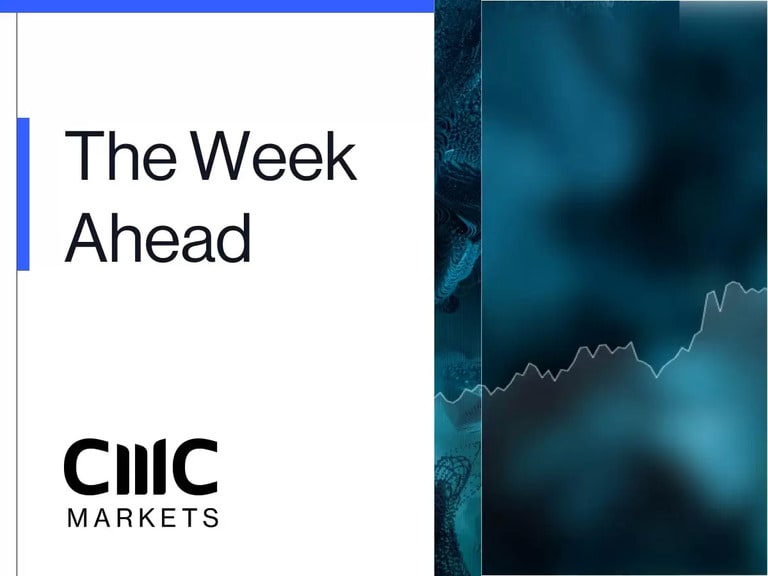The last four days has seen a sharp change in sentiment with yields jumping sharply across the board since Powell’s Jackson Hole speech, as well as sharp declines in equity markets, with the S&P500 falling over 4% in August and the Nasdaq 100 falling by more than 5%.
While US markets fell sharply in August, we’ve also seen sharp declines in global bond markets, with US yields jumping sharply higher. While US yields have seen a sharp rise, these gains have been outpaced by a surge in German and UK yields both on the short and the long end, as markets increasingly price in the prospect of much higher interest rates, as central banks signal a singular determination to rein in sharply rising inflation.
The change has been most noticeable in 2-year yields which have seen record monthly gains. The German 2-year yield ended at 0.281% in July, to end August at 1.2%, while the UK 2-year gilt rose from 1.71% to end August at 3.02%. The US 2-year yield also rose to a 15 year high.
Despite this sharp rise in yields we’ve seen the pound and the euro both see sharp declines in the past few months, although the pound has looked much more vulnerable in recent days, and has continued to fall this morning.
Four successive daily declines have seen the pound slip from the Friday peaks of 1.1900 to the 1.1600 area, and to its worst monthly performance against the US dollar since October 2016, while the euro appears to be looking to carve out a base around the 0.9900 area.
The rebound in the euro appears to be predicated on a belief that the ECB could well raise rates by 75bps next week, following on from its 50bps move in July. However, this is likely to present the ECB with an even bigger problem as Italian 10-year yields head back towards 4%.
The US dollar also had a strong month, finishing higher for the third month in a row and closing at a 20-year high, a trend that has continued this morning in Asia with the USD/JPY trading at a new 24-year peak.
As we start a new month and meteorological autumn, the question now being asked is where we go next for equity markets, after Powell’s comments at the end of last week, and subsequently hawkish comments from more Fed officials this week.
When you have the likes of a typical Fed dove like Minneapolis Fed President Neel Kashkari talk about the unlikely prospect of rate cuts in 2023, it’s hard to envisage a scenario of anything other than a 75bps rate hike later this month, as the Fed continues to insist that their priority is to keep going on rates until the job is done.
As if to re-emphasize this message Cleveland Fed President Loretta Mester also went on the record saying that she doesn’t expect rate cuts in 2023 and for rates to be somewhat above 4% by early next year.
Today’s economic data isn’t expected to slow the determination of central banks to push rates higher, even as the data continues to deteriorate, with the latest numbers out of China signalling further weakness. The latest Caixin manufacturing survey slipped back into contraction at 49.5, while it was being reported that Chengdu was being locked down to contain Covid.
As we look ahead the start of the month, Asia markets have started on the back foot, which is set to drag on European markets which are also set to open lower, as investors start to weigh reports that the US government has banned the sales of chips to Russia and China by Nvidia.
We already know that the latest August manufacturing PMIs from Germany and France are expected to contract at 49.8 and 49 respectively, however we’ll also get the picture from Spain and Italy which are expected to be equally as weak, with Spain set to slip to 48.5 and Italy to 48.1. The UK is expected to be confirmed at 46.
In the US, weekly jobless claims appear to have plateaued in and around the 250k level, after hitting an 8-month high of 261k back in July. With the official payrolls numbers due tomorrow there is some uncertainty as to whether the sort of jobs growth we saw in July was a one-off, or whether it is prompting a return to the workforce from some early retirees.
Yesterday’s ADP report would suggest not, with only 128k jobs added in August under the new methodology. This was well below forecasts of 300k, however on the wages numbers it is becoming apparent that upward wage pressure is increasing, with average wage gains of 7.6% for those in jobs and around 16% for those moving to different jobs.
EUR/USD – continues to edge higher however until such times as we break through last week’s peaks at the 1.0120 area, this has all the makings of a short squeeze. We can see the potential for a squeeze towards 1.0220, but while below that the bias remains for a move towards 0.9660, on a break below 0.9900.
GBP/USD – the March 2020 lows are currently at the 1.1410/15 area and the current weakness could take us all the way back to those lows. For the moment there has been little evidence of a rebound, with resistance at the 1.1750/60 area.
EUR/GBP – pushed beyond the 0.8630 area and looks to be heading towards the June highs at 0.8720. Support now comes in at the 0.8580 area.
USD/JPY – the previous highs at 139.40 have given way opening up the road towards the 140.00 area, and potentially higher. Support now comes in at the 137.15 area or cloud support, and below that at the 50-day SMA at 135.80.
CMC Markets erbjuder sin tjänst som ”execution only”. Detta material (antingen uttryckt eller inte) är endast för allmän information och tar inte hänsyn till dina personliga omständigheter eller mål. Ingenting i detta material är (eller bör anses vara) finansiella, investeringar eller andra råd som beroende bör läggas på. Inget yttrande i materialet utgör en rekommendation från CMC Markets eller författaren om en viss investering, säkerhet, transaktion eller investeringsstrategi. Detta innehåll har inte skapats i enlighet med de regler som finns för oberoende investeringsrådgivning. Även om vi inte uttryckligen hindras från att handla innan vi har tillhandhållit detta innehåll försöker vi inte dra nytta av det innan det sprids.






